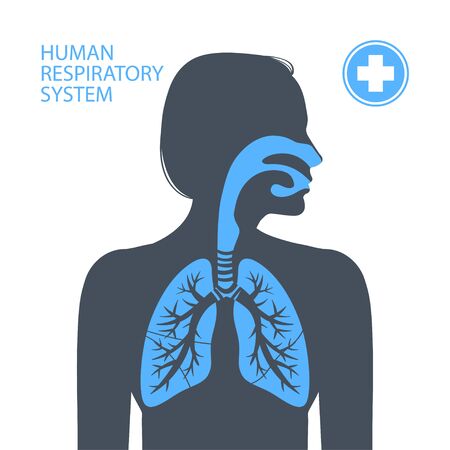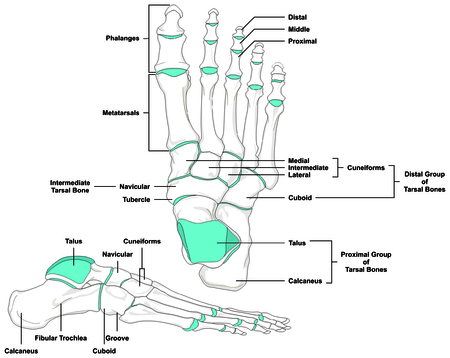Introduction to Occupational Therapy and Assistive Technology
Occupational therapy (OT) is an important healthcare profession in the United States that helps people of all ages participate in the activities they want and need to do, regardless of injury, illness, or disability. The main goal of occupational therapists (OTs) is to support clients in becoming as independent and engaged as possible in their daily lives, whether at home, work, school, or out in the community.
What Do Occupational Therapists Do?
In the U.S., OTs work with clients who have a wide range of conditions—such as strokes, spinal cord injuries, autism, developmental delays, arthritis, or age-related challenges. OTs look at each persons strengths and barriers to participation, then create personalized plans to help them achieve meaningful goals. This might include teaching new skills, adapting environments, or recommending helpful tools.
| Role of Occupational Therapists | Examples |
|---|---|
| Assessing daily living skills | Dressing, cooking, bathing |
| Recommending adaptive equipment | Wheelchairs, reachers, special utensils |
| Modifying home or work environments | Installing grab bars, ramps |
| Training on technology use | Voice-activated devices, computer access tools |
Understanding Assistive Technology (AT)
Assistive technology (AT) refers to any item, piece of equipment, software program, or product system that increases, maintains, or improves the functional capabilities of people with disabilities. In everyday language, AT can be anything from a simple device like a pencil grip to high-tech solutions such as communication apps on a tablet.
Types of Assistive Technology Commonly Used in the U.S.
| Type of AT | Description/Example | Main Purpose |
|---|---|---|
| Mobility aids | Wheelchairs, walkers | Help with moving around safely and independently |
| Communication devices | Speech-generating tablets/apps | Support communication for those with speech difficulties |
| Adaptive tools for daily living | Specialized utensils, dressing aids | Increase independence in self-care tasks |
| Sensory aids | Noise-canceling headphones, weighted blankets | Assist clients with sensory processing needs |
| Cognitive supports | Reminder apps, visual schedules | Aid memory and organization for clients with cognitive challenges |
The Importance of Assistive Technology in Occupational Therapy Practice
For many Americans living with disabilities or recovering from injuries, assistive technology can be life-changing. OTs play a crucial role in assessing each clients unique needs and matching them with the right AT solutions. By doing so, OTs help clients gain confidence and independence to take part in everyday life at home and in their communities.
2. Client-Centered Assessment Process
Occupational therapists (OTs) in the United States take a client-centered approach when assessing and prescribing assistive technology. This means that every step of the process is focused on understanding and respecting the unique needs, preferences, and daily routines of each person they work with. Here’s how OTs typically go about this assessment:
Interviewing the Client
The first step is usually an interview. OTs sit down with clients—and often their families or caregivers—to ask about their day-to-day lives, what activities are important to them, and any challenges they face. This conversation helps the OT understand personal goals, cultural values, lifestyle habits, and what “independence” means to each client. For example, someone living in a rural area may have different needs than someone living in a big city.
Common Interview Topics
| Topic | Examples of Questions |
|---|---|
| Daily Routines | “Can you walk me through a typical day?” “What tasks do you need help with?” |
| Personal Goals | “What would you like to be able to do on your own?” “Are there hobbies you want to get back to?” |
| Lifestyle Preferences | “Do you prefer technology that’s simple or more advanced?” “Are you comfortable with using smartphones or tablets?” |
| Cultural & Family Values | “Who helps you at home?” “Are there routines or traditions that are important for you?” |
Standardized Assessments
After the interview, OTs use standardized assessments—structured tools designed to measure specific abilities or difficulties. These might include questionnaires or practical tests that focus on mobility, hand function, communication skills, memory, or other areas relevant to daily living. Using these assessments helps ensure the evaluation is fair and consistent, no matter who the client is or where they live in the U.S.
Examples of Standardized Assessments Used by OTs
| Name of Assessment | Main Purpose |
|---|---|
| Functional Independence Measure (FIM) | Assesses levels of independence in daily activities |
| Kohlman Evaluation of Living Skills (KELS) | Evaluates ability to perform self-care and community tasks |
| Canadian Occupational Performance Measure (COPM) | Measures client satisfaction with performance in various life roles |
Observation in Real-Life Settings
In addition to interviews and formal tests, OTs often observe clients as they go about their daily activities—either at home, work, school, or in the clinic. This real-life observation helps OTs see firsthand what tasks are challenging and which strategies already work well. It also allows them to spot barriers in the environment that might affect assistive technology use.
Respecting Client Preferences and Lifestyles
A key part of this process is always respecting what matters most to each client. American OTs work hard to make sure assistive technology fits not just the client’s abilities but also their preferences and way of life. For example, some clients may prefer low-tech solutions like grab bars or magnifiers over high-tech devices; others may want something discreet for use at school or work. By involving clients every step of the way, OTs help ensure solutions are both practical and personally meaningful.

3. Evaluating and Selecting Assistive Technology
When occupational therapists (OTs) in the United States help clients choose assistive technology, they carefully consider several important factors to make sure the device truly meets the clients needs. This process is not just about picking any gadget—it’s about finding the right fit for each person’s lifestyle, budget, and environment. Below are some key considerations OTs take into account:
Key Factors Occupational Therapists Consider
| Factor | Description |
|---|---|
| Functionality | Does the device actually help the client achieve their daily goals? OTs check if the technology supports activities like dressing, eating, working, or using transportation. |
| Ease of Use | The device should be simple for the client to learn and operate, even if they have physical or cognitive challenges. OTs often look for products with clear instructions and intuitive controls. |
| Affordability | Cost is a big concern for many families in the U.S. OTs try to recommend devices that fit within the client’s budget and explore options that might be covered by insurance or community programs. |
| Client-Specific Requirements | Each client is unique. OTs think about age, diagnosis, personal preferences, cultural background, and specific tasks the client wants to perform. |
| Compatibility with Environment | The device must work well at home, school, work, or anywhere the client spends time. OTs assess things like space limitations, lighting, noise levels, and family or caregiver support. |
Personalized Assessment Process
OTs often involve both the client and their family in discussions about potential devices. They might set up trials so clients can test out equipment before making a final choice. This hands-on approach helps ensure that whatever technology is chosen will really make life easier and more independent for the client.
4. Training, Implementation, and Follow-Up
Helping Clients and Caregivers Learn to Use Assistive Technology
Once occupational therapists (OTs) have selected the right assistive technology for a client, the next step is to make sure everyone knows how to use it. OTs provide hands-on training for both clients and their caregivers. This training usually takes place in real-life settings like the client’s home, school, or workplace. The OT will demonstrate how to use the device, then let the client and caregiver practice while offering feedback and encouragement.
Key Training Steps
| Step | Description |
|---|---|
| Demonstration | The OT shows how to use each feature of the assistive device. |
| Guided Practice | The client and caregiver try using the device with the OT’s support. |
| Problem-Solving | The OT helps identify and solve any issues that come up during practice. |
| Education | The OT explains safety tips, maintenance, and troubleshooting basics. |
Monitoring Progress Over Time
Training does not stop after the first session. OTs continue to check in with clients regularly. They may visit at home, call on the phone, or use telehealth video calls—whatever works best for the client’s needs. These follow-ups help OTs see if the technology is making life easier or if there are new challenges to address.
Ways OTs Monitor Progress
- Observing clients using the device in daily routines
- Asking about what works well and what feels hard
- Reviewing goals set during earlier sessions
- Adjusting training based on feedback from the client or caregiver
Troubleshooting Challenges and Making Adjustments
If a device isn’t working as expected, or if the client’s needs change, OTs are ready to help. They might adjust settings on a device, recommend new accessories, or even suggest switching to a different type of assistive technology. The goal is always to help clients gain more independence and confidence in their daily lives.
Common Challenges and OT Solutions
| Challenge | How OTs Help |
|---|---|
| Device is too complicated to use | Simplify instructions; break tasks into smaller steps; provide written or visual guides. |
| Caregivers feel overwhelmed | Offer extra training sessions; connect caregivers with support groups or resources. |
| Device does not fit daily routine well | Tweak when and how the device is used; look for alternative solutions if needed. |
| Physical discomfort or safety concerns | Check device fit; adjust positioning; review safety practices. |
This ongoing partnership between OTs, clients, and caregivers ensures that assistive technology keeps meeting each person’s unique needs over time.
5. Collaboration and Advocacy within the U.S. Healthcare System
Teamwork with Interdisciplinary Professionals
Occupational Therapists (OTs) in the United States work closely with a wide range of professionals to ensure clients receive the best possible assistive technology. OTs often collaborate with physical therapists, speech-language pathologists, doctors, nurses, social workers, and rehabilitation engineers. This team approach helps create a holistic plan that addresses all aspects of a client’s needs.
Examples of Interdisciplinary Collaboration
| Professional | Role in Assistive Technology Process |
|---|---|
| Physical Therapist | Assesses mobility needs and recommends mobility aids |
| Speech-Language Pathologist | Evaluates communication needs and suggests communication devices |
| Rehabilitation Engineer | Designs or customizes assistive devices for unique requirements |
| Social Worker | Connects families to community resources and support services |
Coordinating with Insurance Providers and Funding Sources
Navigating insurance coverage is an essential part of prescribing assistive technology in the U.S. OTs work directly with insurance companies, Medicare, Medicaid, and other funding agencies to secure approval and reimbursement for devices. They often write detailed justification letters explaining why specific equipment is necessary for a client’s daily life and independence.
Common Funding Sources for Assistive Technology
| Source | Description |
|---|---|
| Private Insurance | Covers medically necessary devices as outlined in policy terms |
| Medicare/Medicaid | Federal programs covering eligible individuals based on need or age |
| School Districts (IEP/504 Plan) | Provide AT for students as part of educational accommodations |
| Nonprofits/Grants | Offer financial assistance for those not covered by insurance |
Partnering with Educators and Community Resources
For clients who are students or active in their communities, OTs often coordinate with teachers, school administrators, and local organizations. This ensures that assistive technology is integrated into classrooms, workplaces, or home environments smoothly. They may provide training sessions for educators or family members so everyone can support the client effectively.
Ways OTs Support Clients Beyond Clinical Settings
- Organizing workshops for teachers on device use in schools
- Liaising with employers to adapt workplace tools or spaces
- Connecting families to local disability advocacy groups or lending libraries for equipment trials
Advocating for Clients’ Rights and Access to Technology
A key role of OTs is advocating for their clients’ access to appropriate assistive technology. This might mean educating clients about their rights under laws like the Americans with Disabilities Act (ADA) or Individuals with Disabilities Education Act (IDEA). OTs may also attend meetings or hearings to speak on behalf of clients who face barriers to getting needed equipment.


